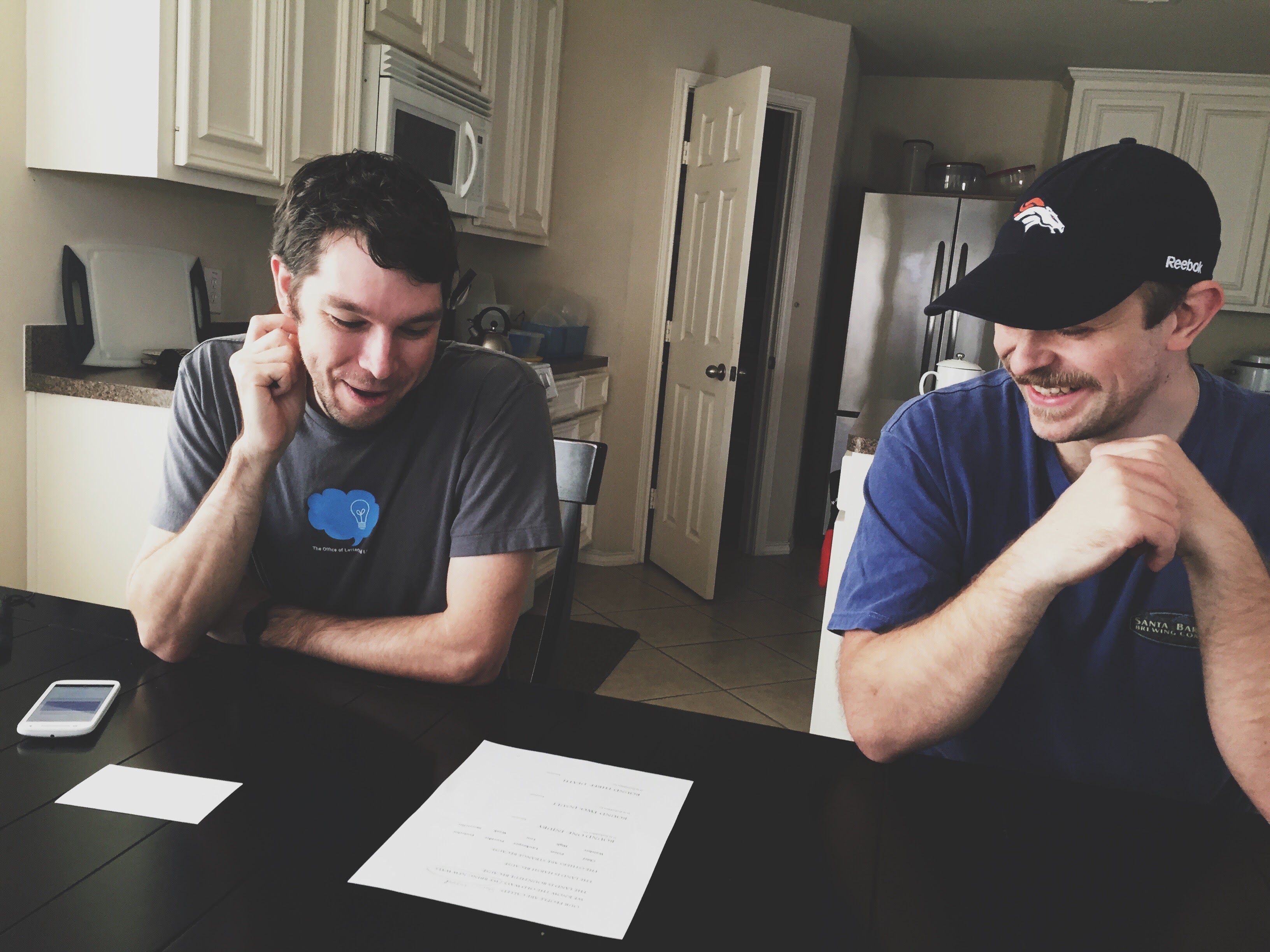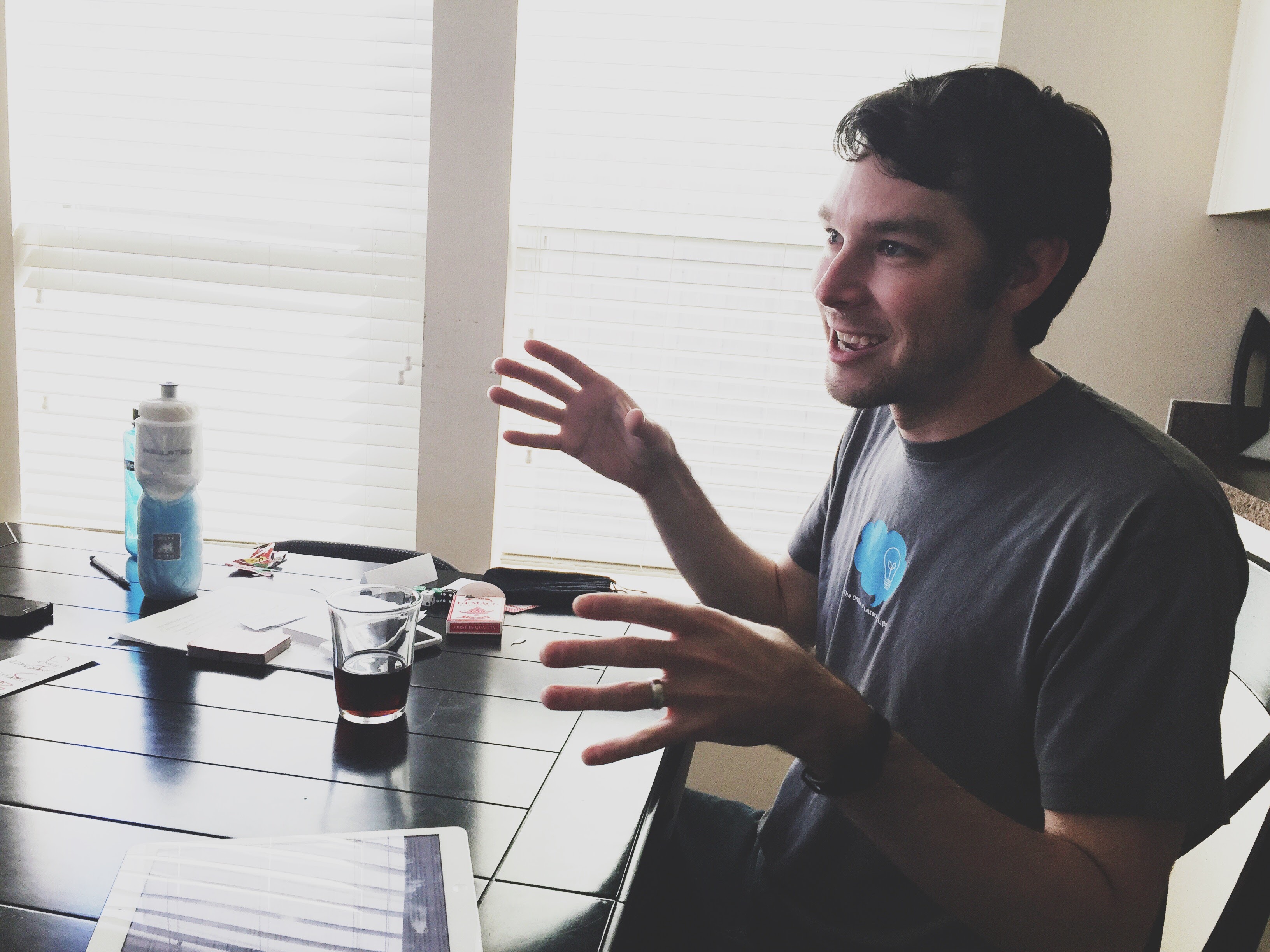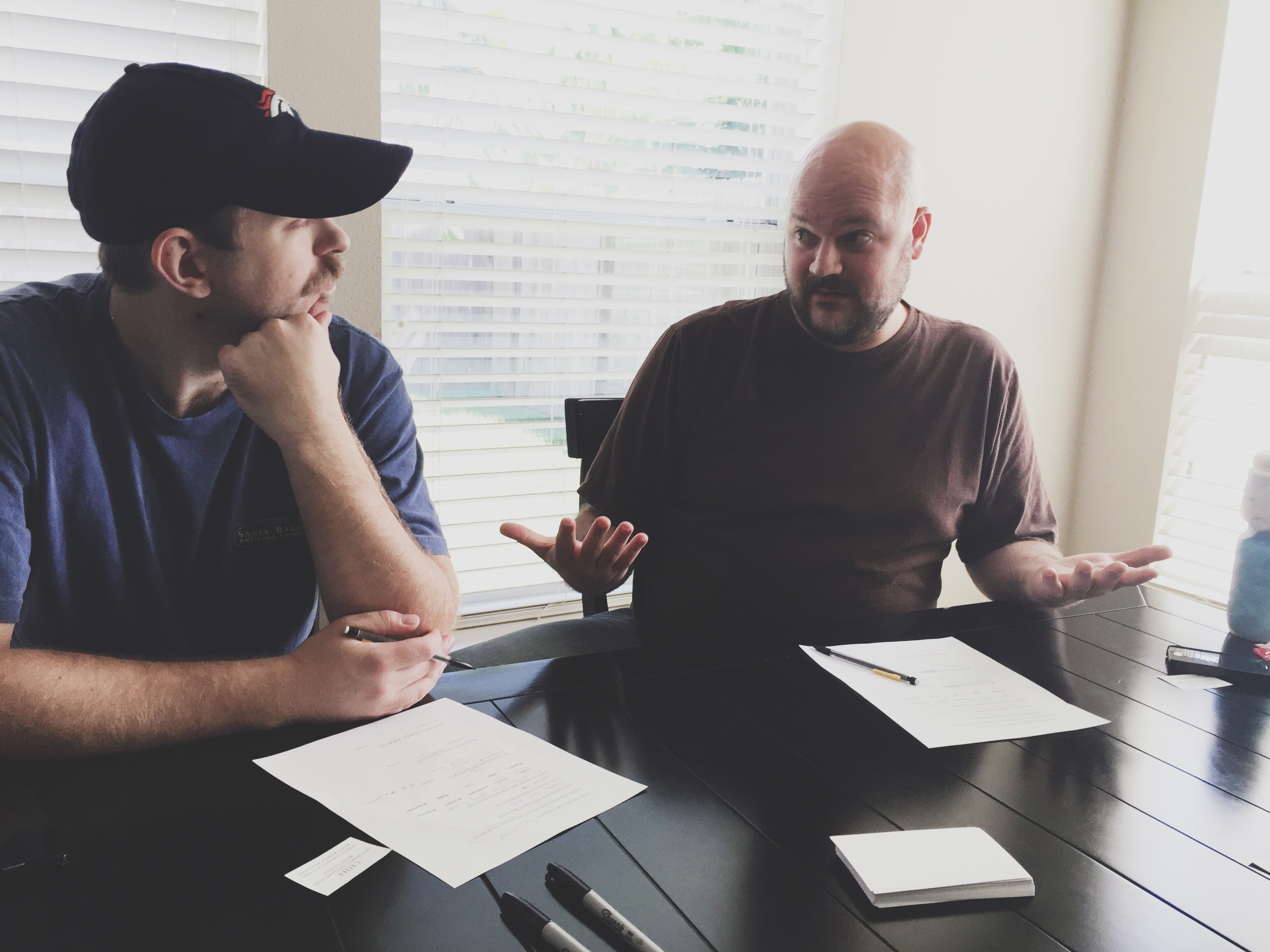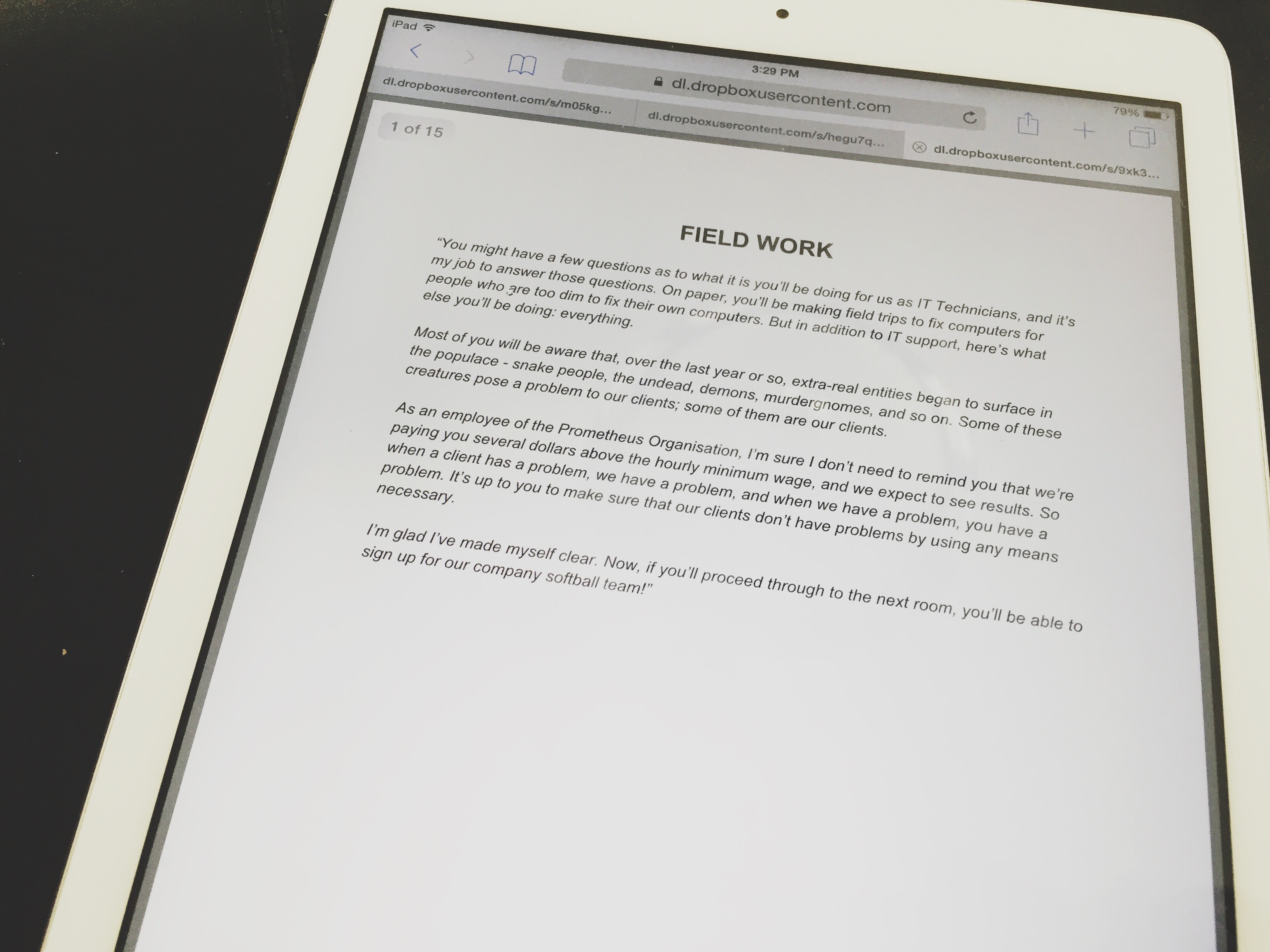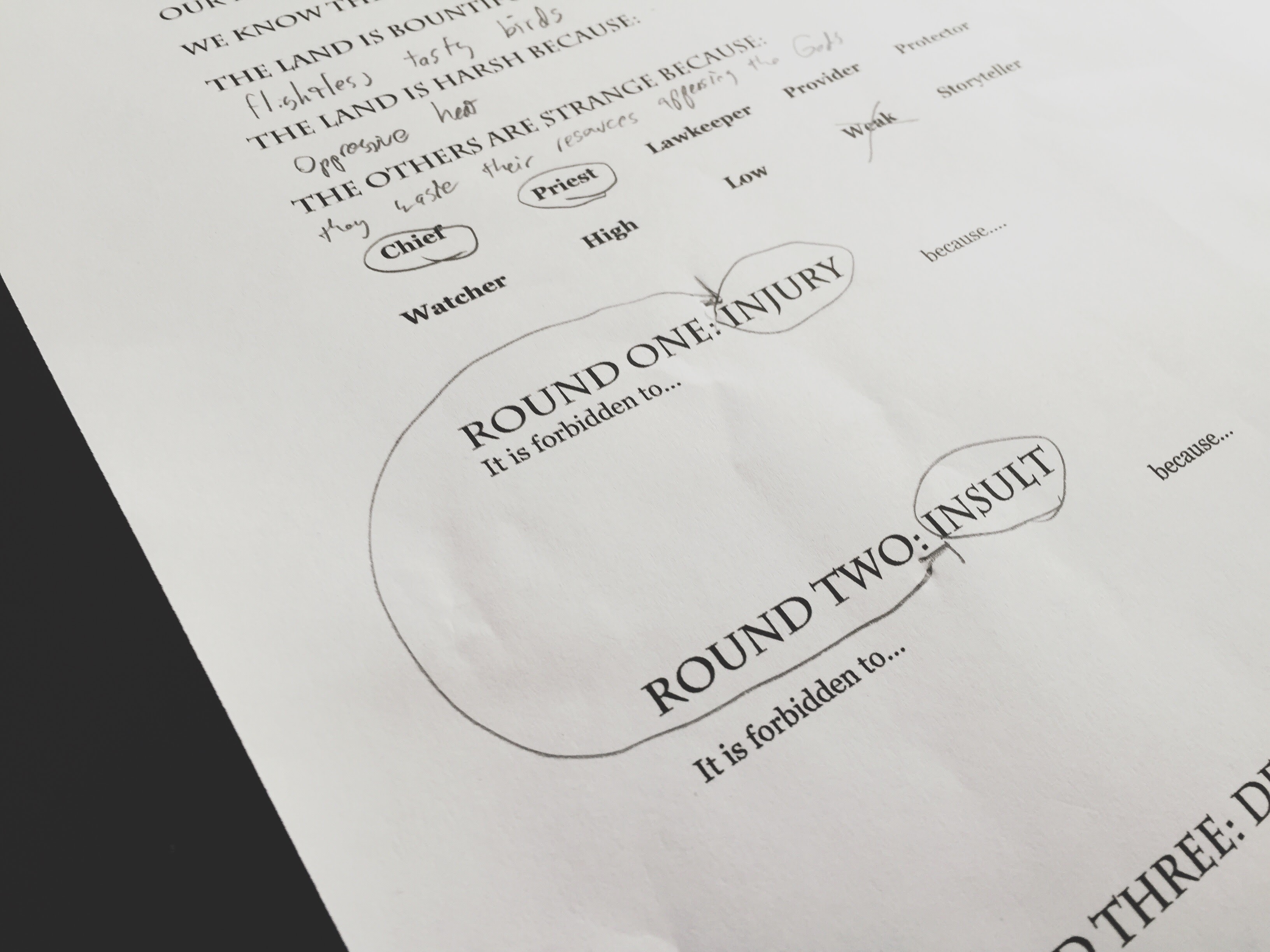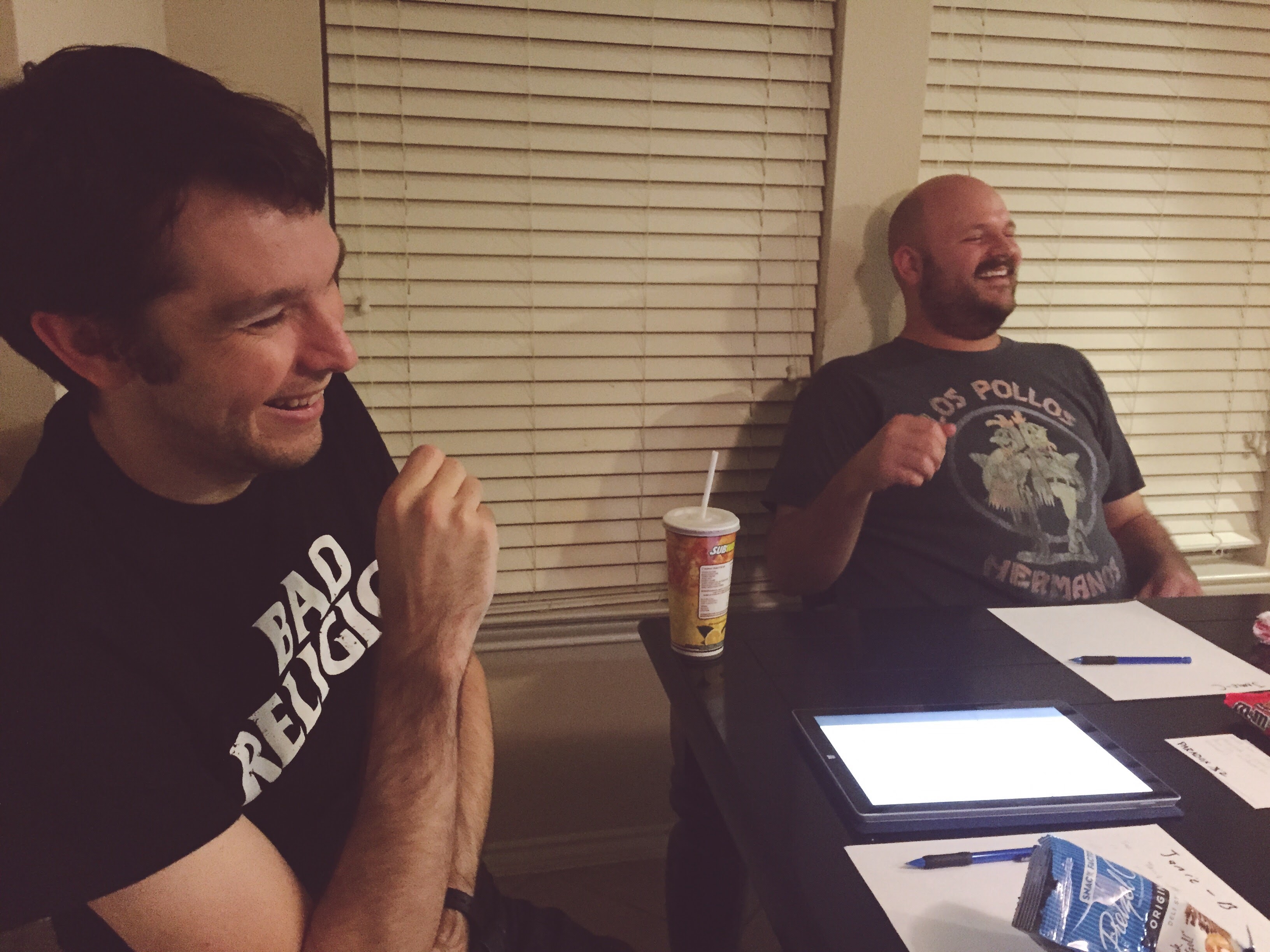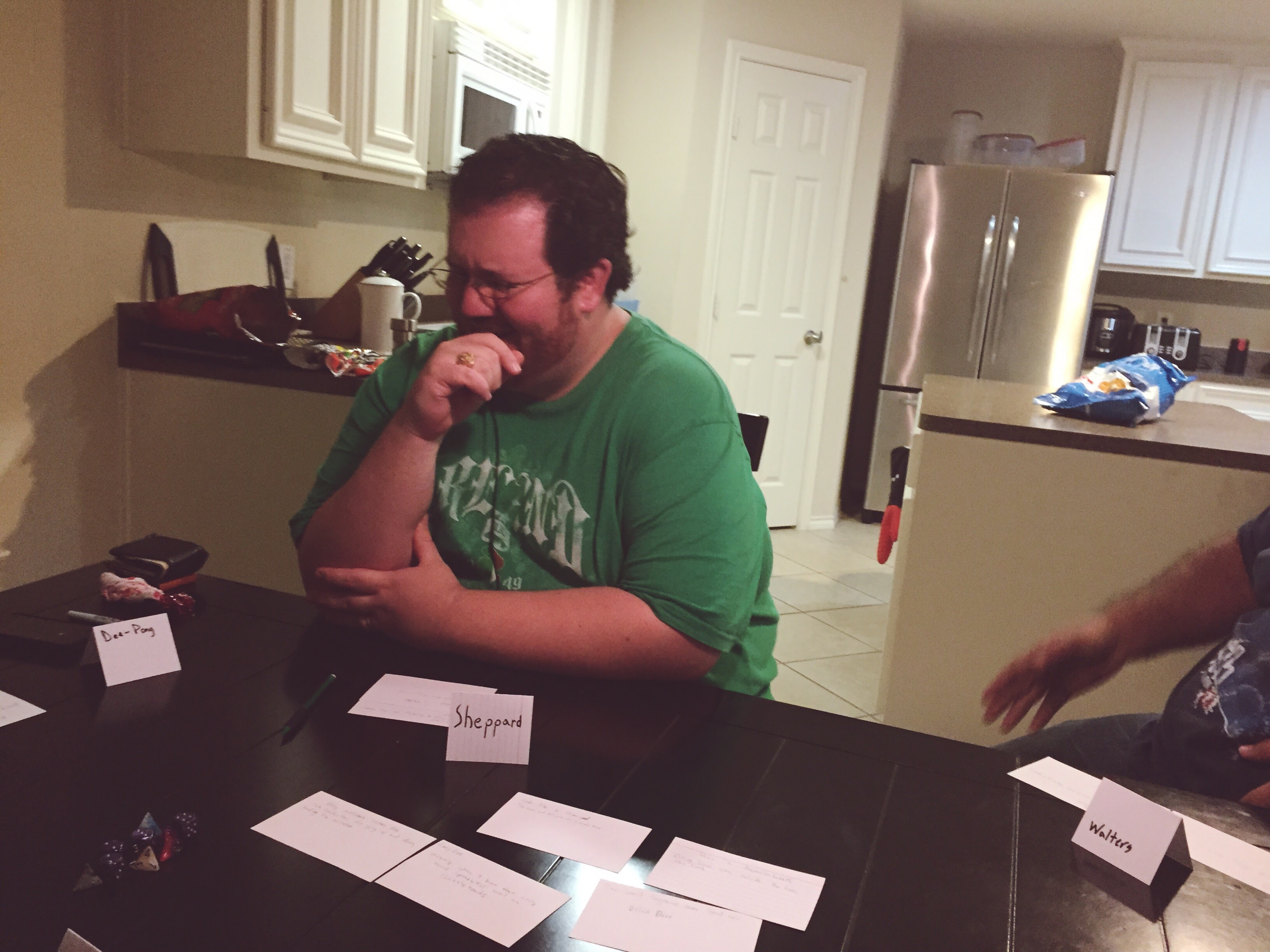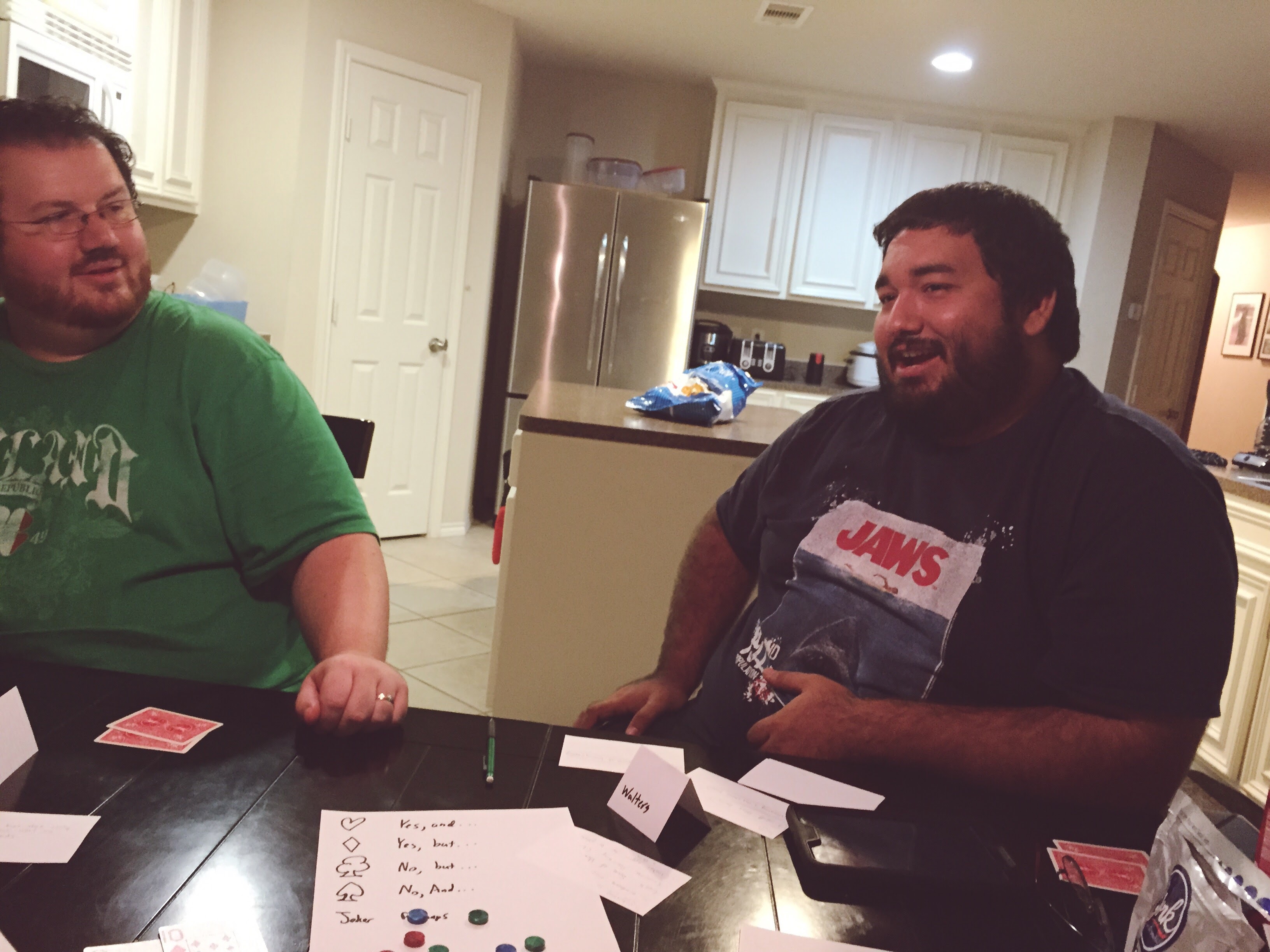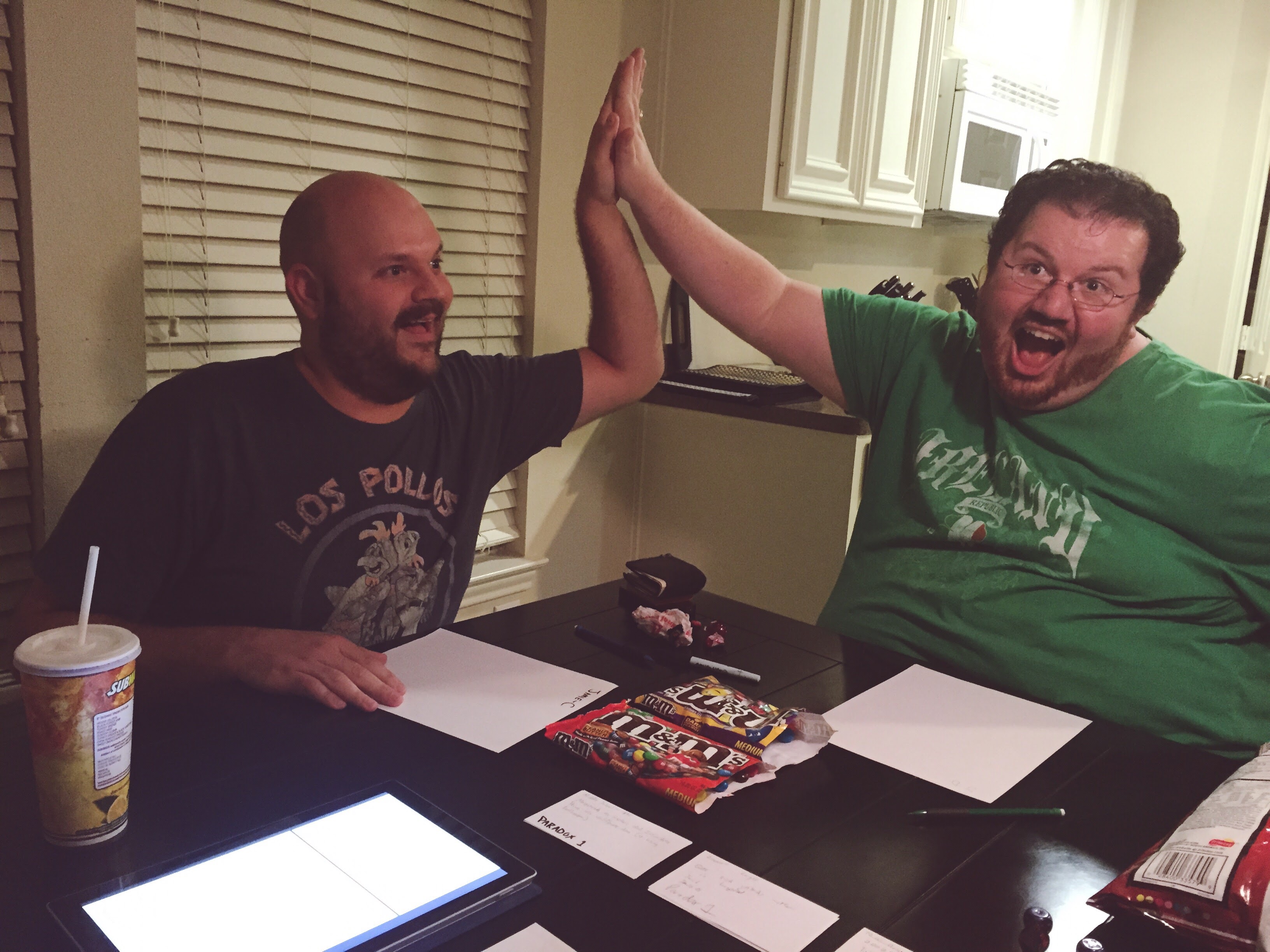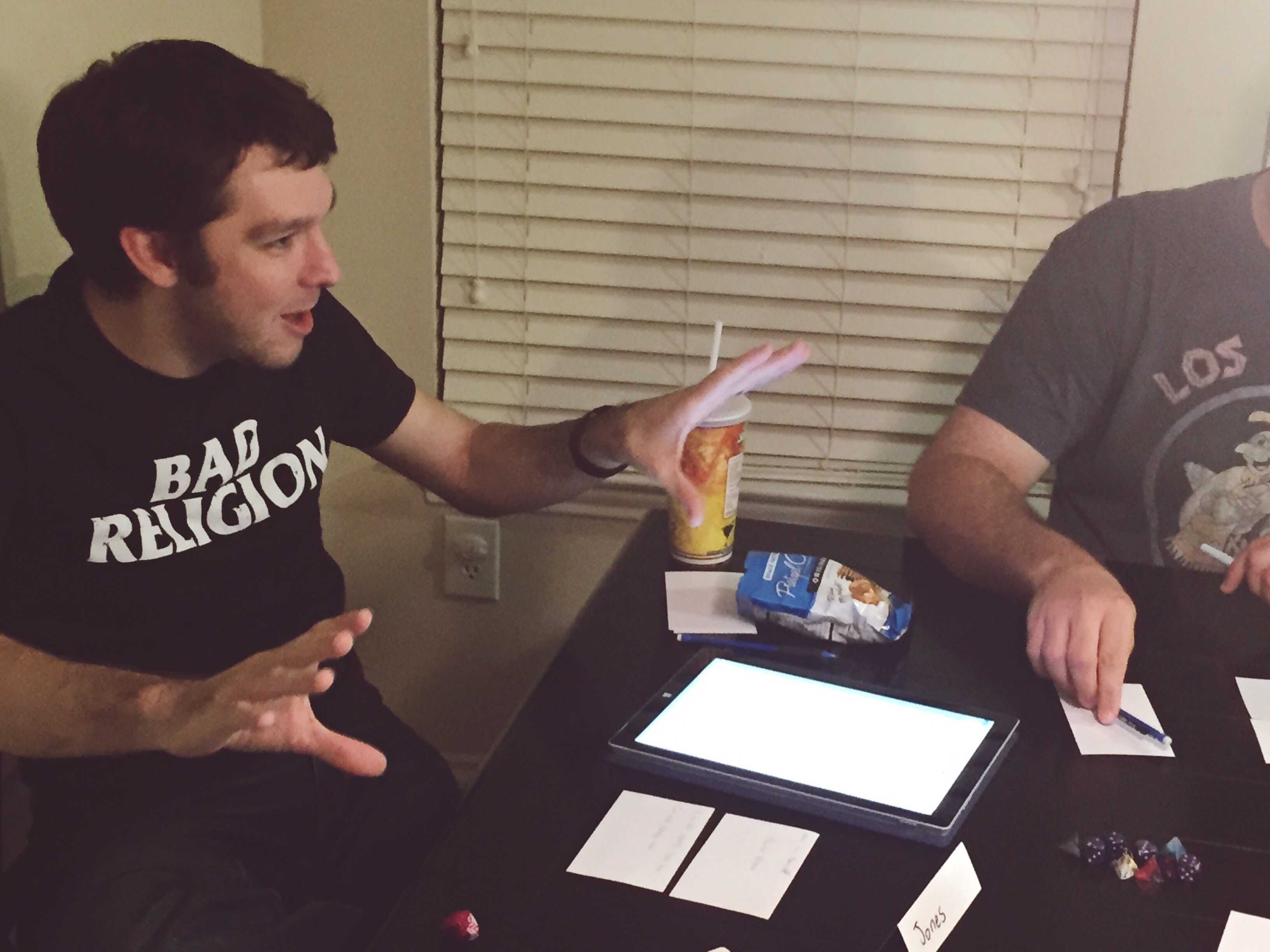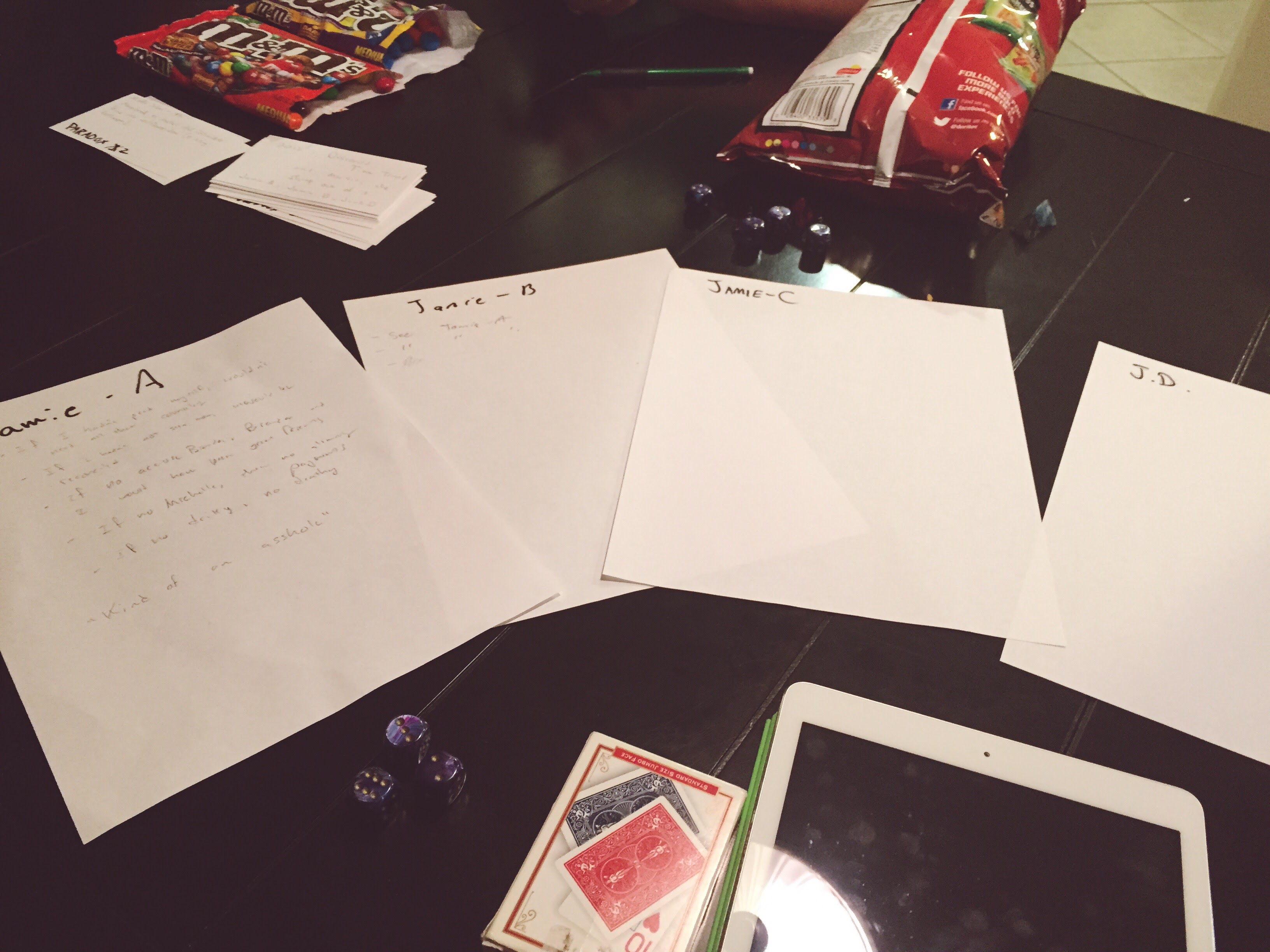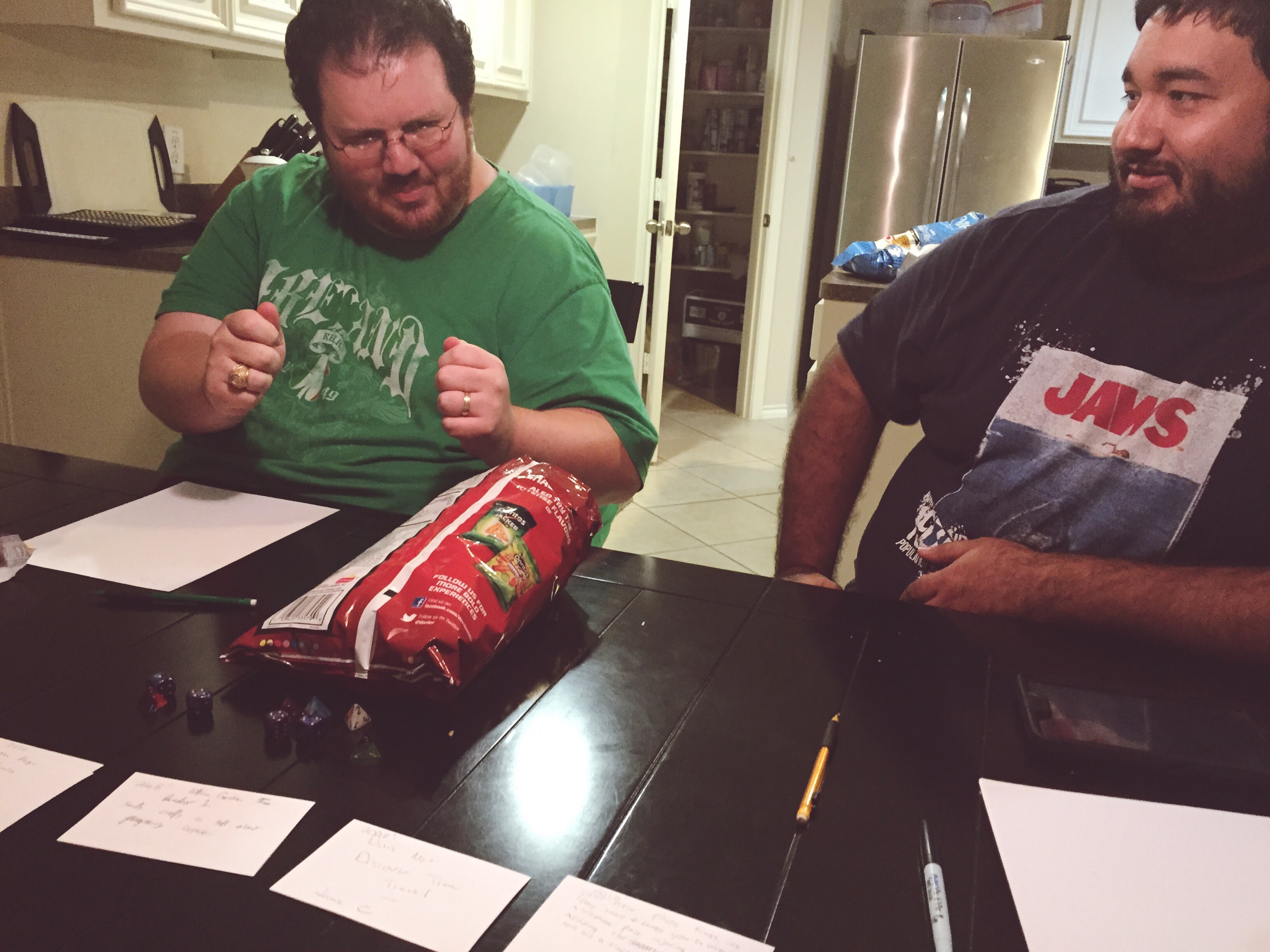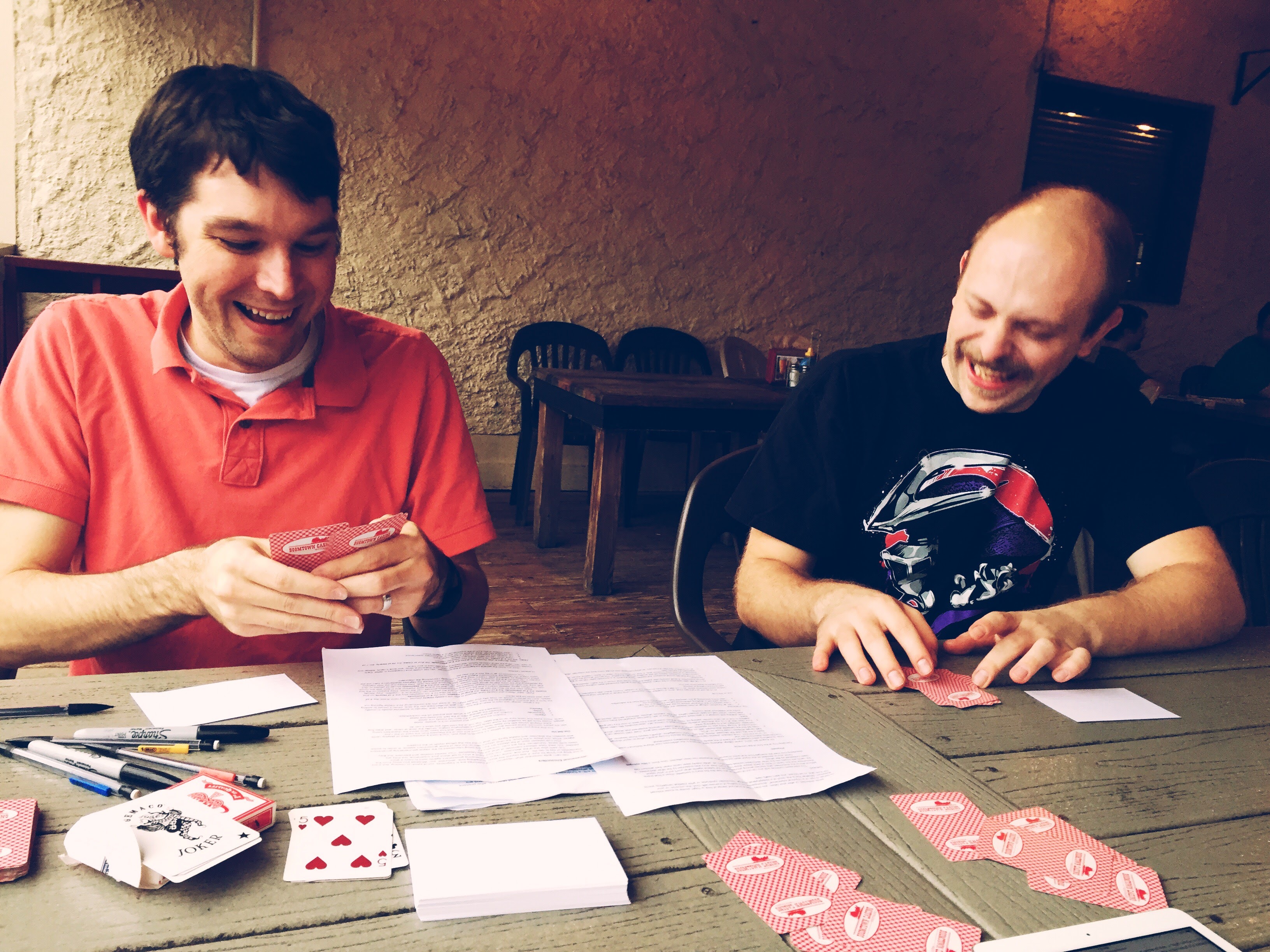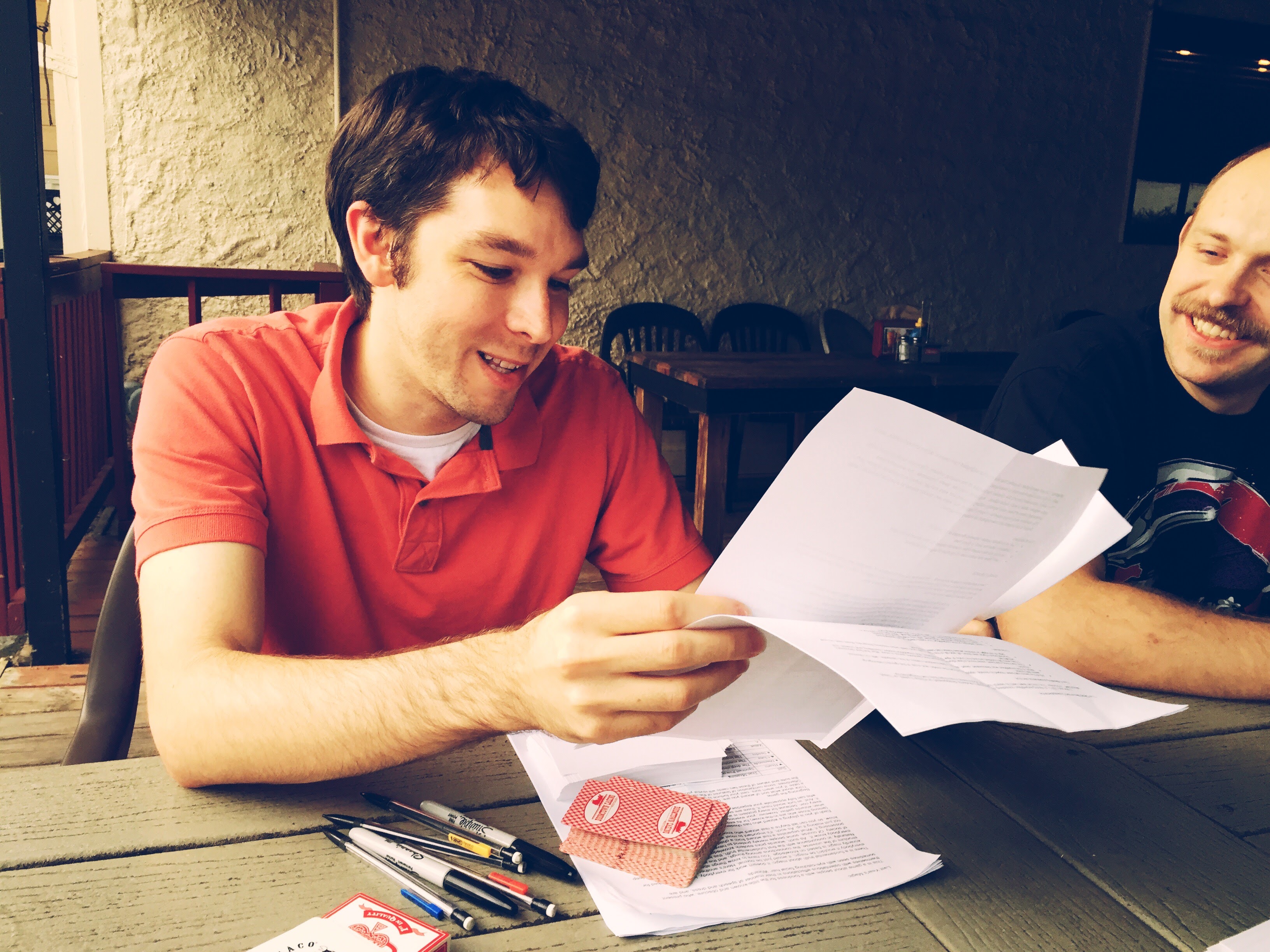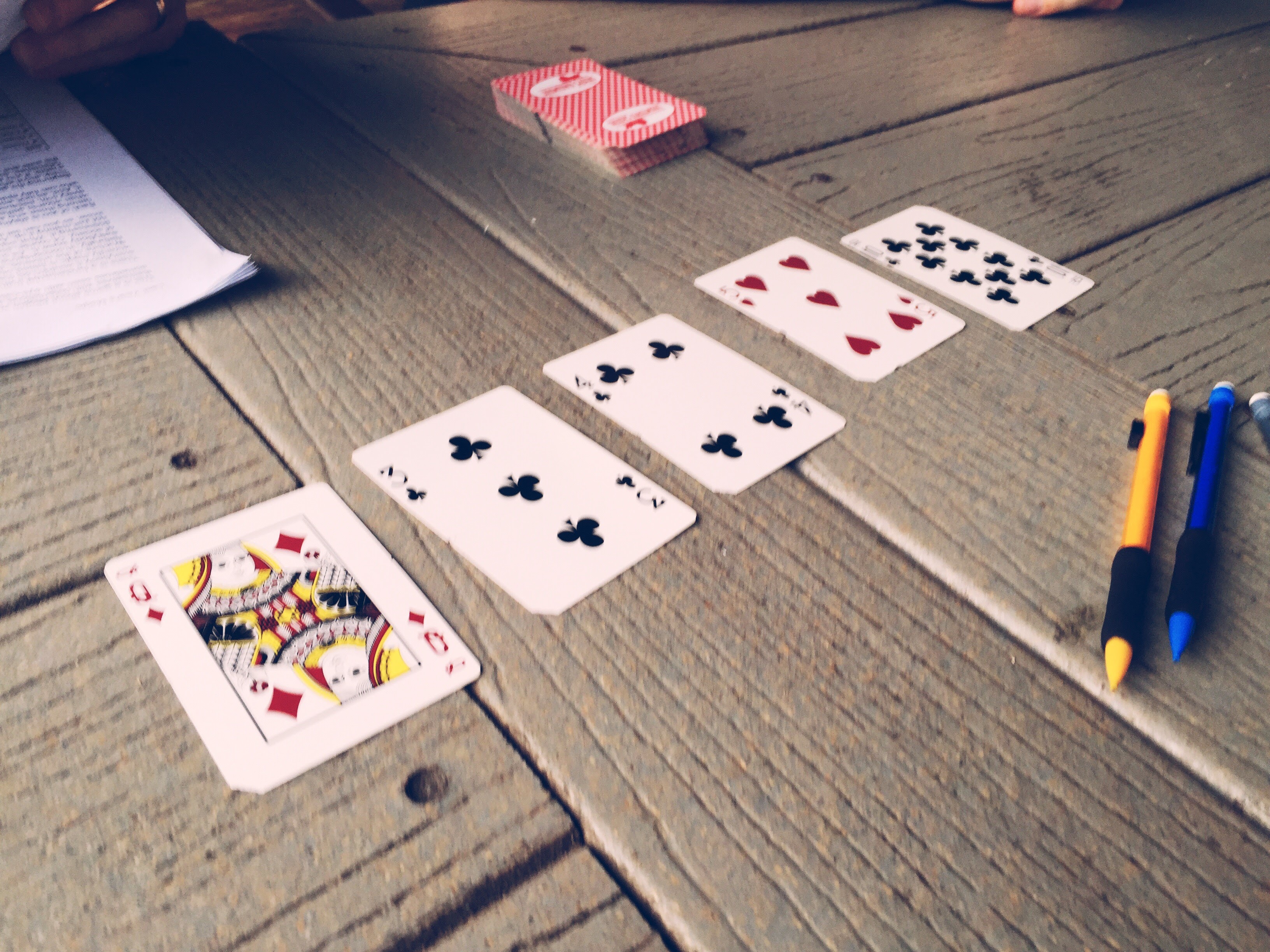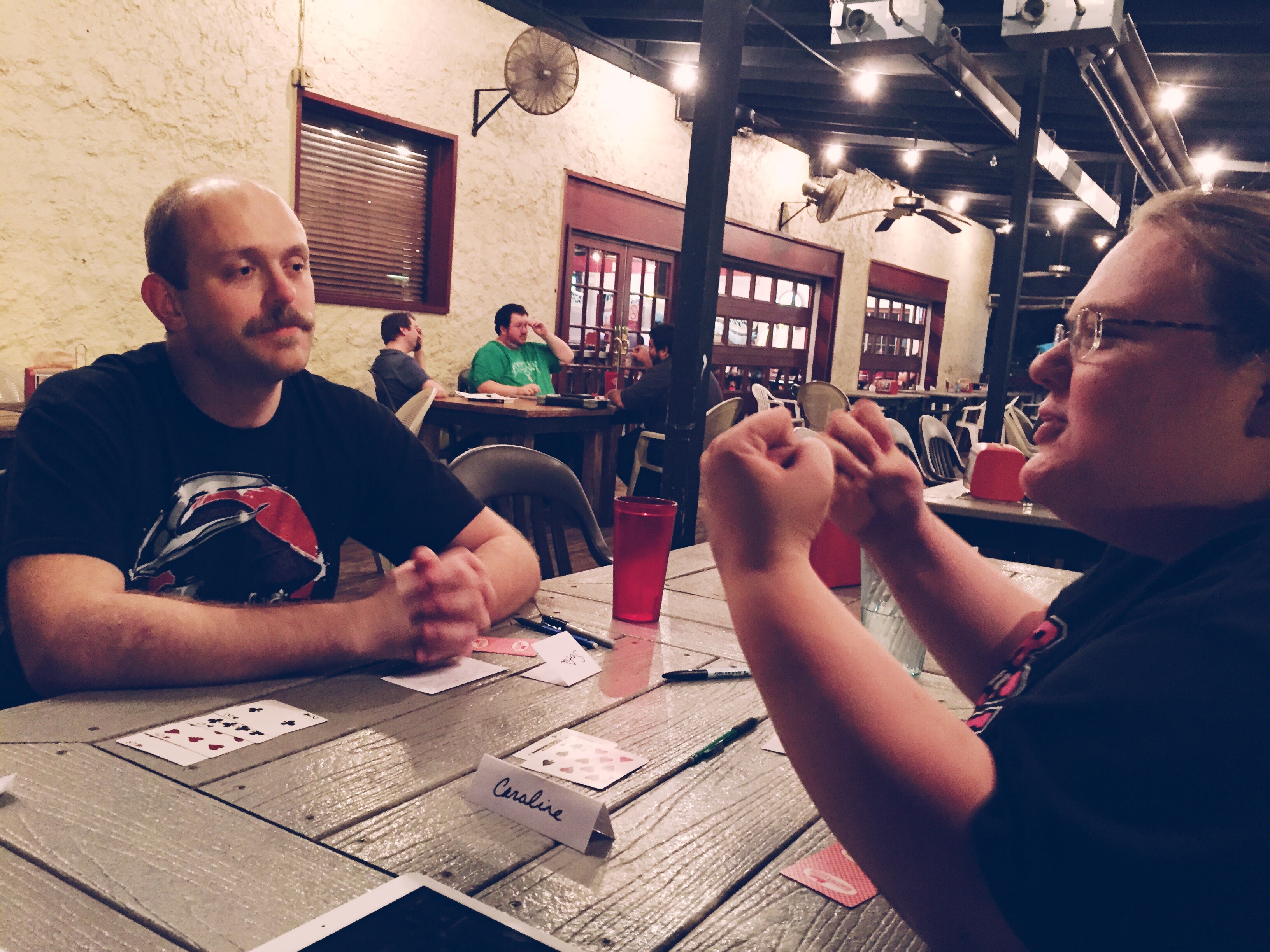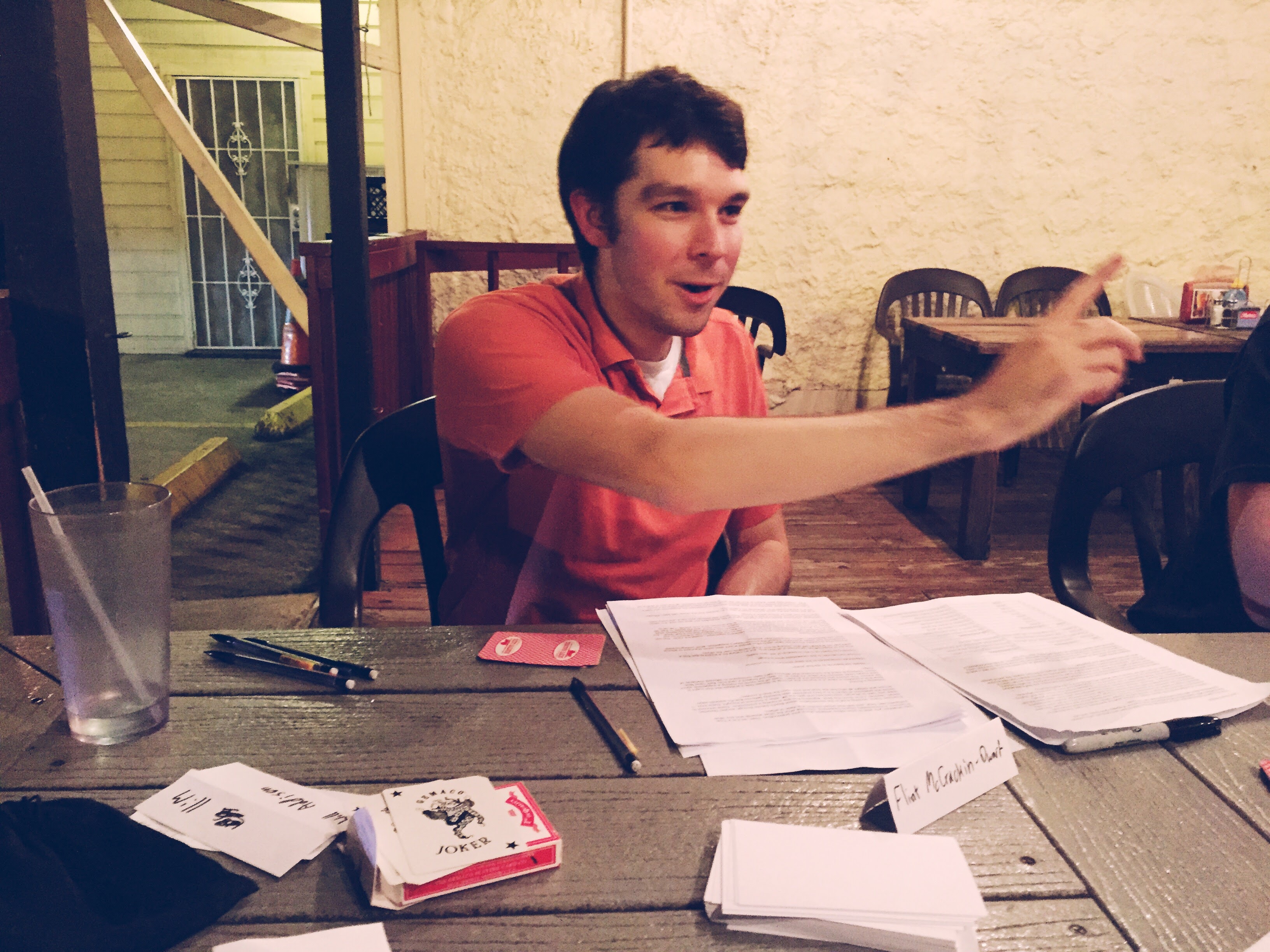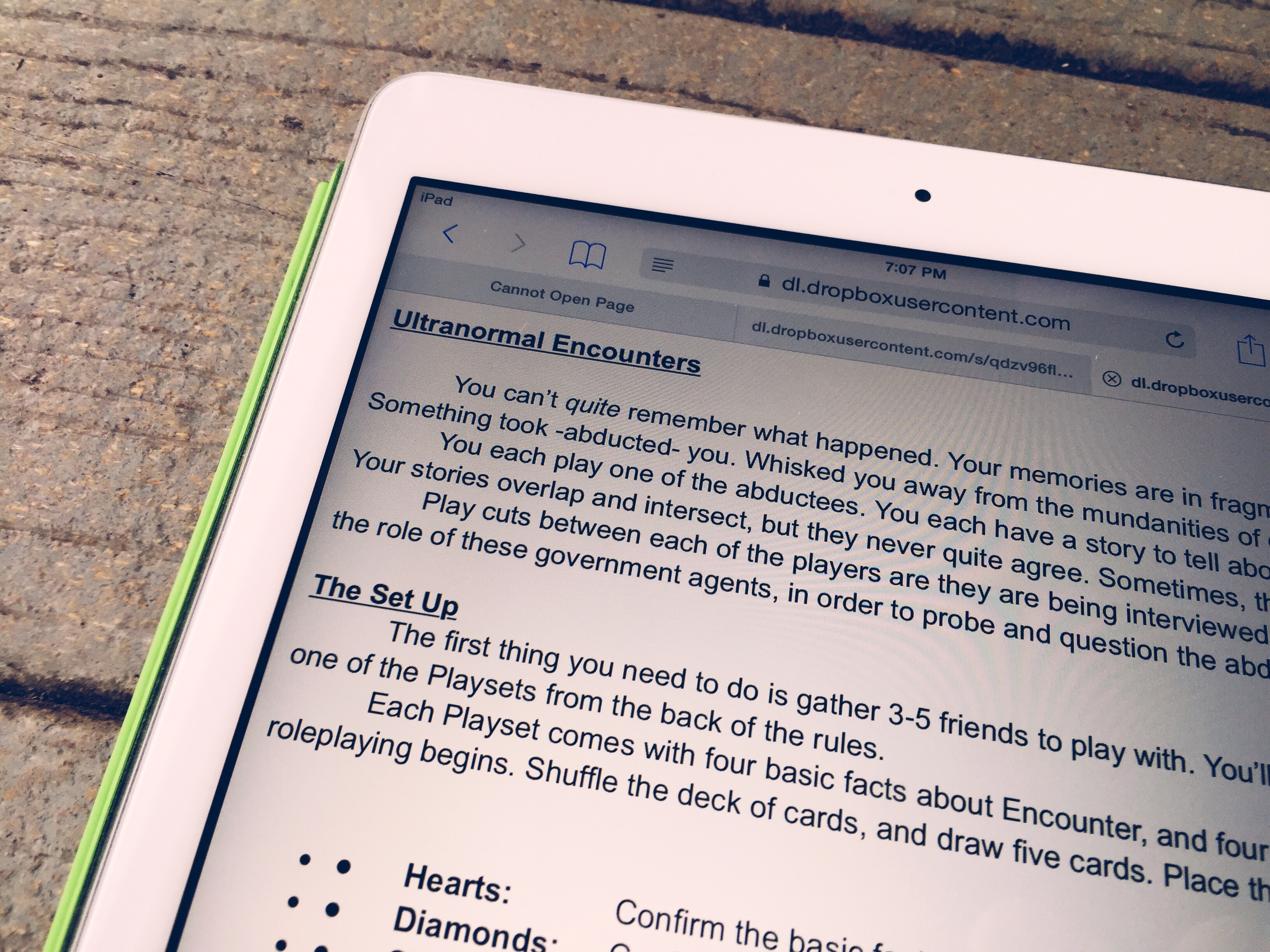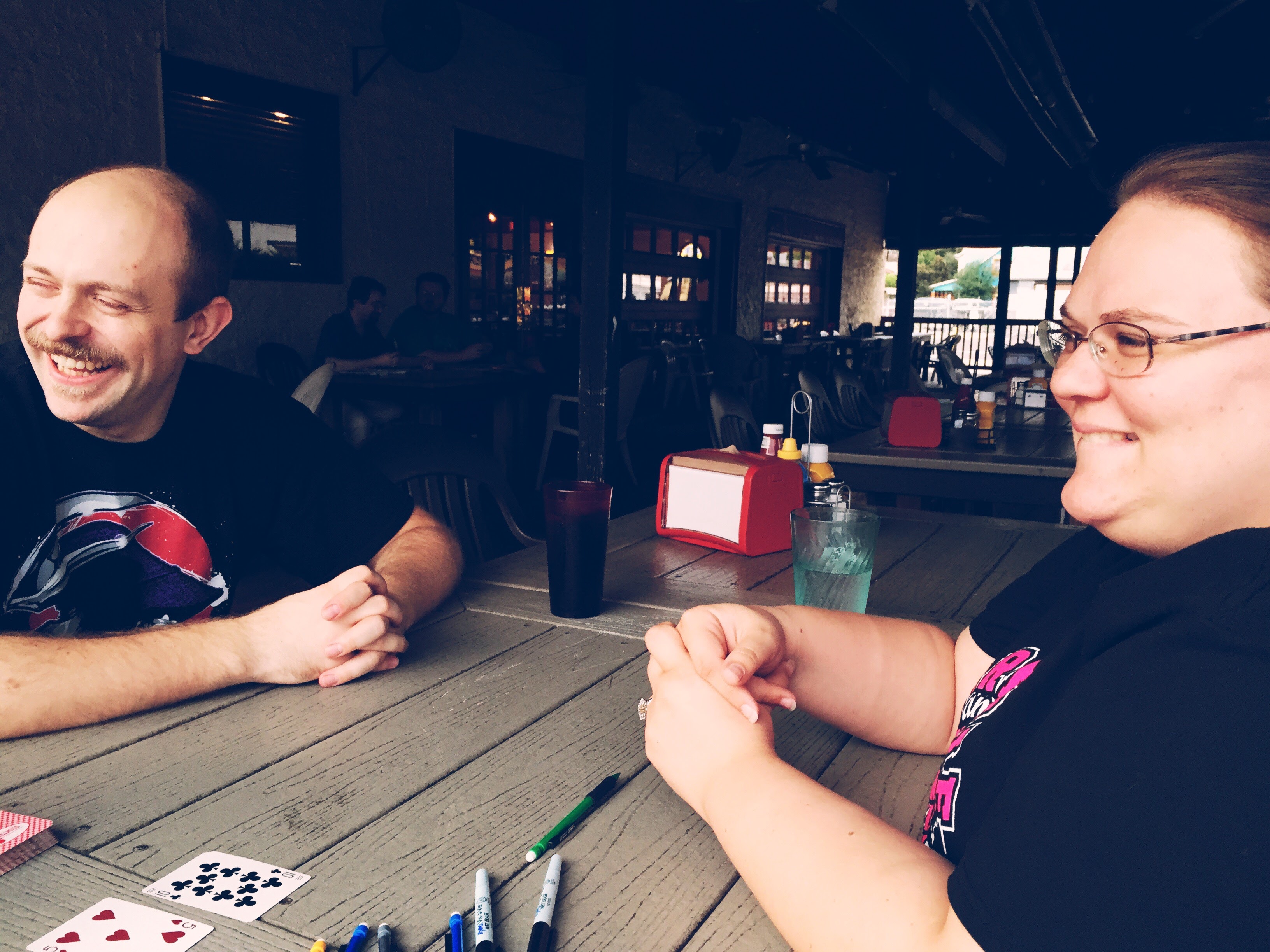Last night, we ran two tables of #threeforged playtests. My table played Children’s Radio Hour and Fear of the Dark.
Children’s Radio Hour
Wow, this game. This is another one that I love, in theory, just because it’s such a unique idea. All of the players are actors on a children’s radio show. Each player has a different agenda that they are trying to subtly push through the story while still keeping it, on its face, nothing more than a light children’s tale. The game has a strict one hour time limit and you aren’t allowed to break character, except for during a handful of commercial breaks. In general, when it’s working, it works well. Our radio play was fun. I’m led to believe that it’s got a similar vibe to Puppetland, in that you can’t just narrate what your character is doing in third person, it’s all kid-friendly first person narration, e.g. “Now, I’m casting a magic spell on you. Abracadabra!”
To help out with your improvising, you’ve got a stack of index cards with prompts for “characters”, “locations”, and “things” in the middle of the table that you can pull from when you want to incorporate something new into the play. In the beginning of the game, before you start the timer, every person creates one of each, but you should be writing more constantly since writing leading prompts is the best way to get your agenda into the play.
Here’s the problem though: there are so many things going on in real-time that it’s almost impossible to do them all and bring your A-game to the roleplaying. Here’s a short list of what you should be doing / holding in your head at all times:
* Roleplaying your character (or, more likely, multiple characters)
* Keeping track of who the other players are roleplaying (multiple characters each)
* Writing prompt cards (don’t forget to incorporate your agenda when writing them). This is super important; we kept running out.
* Pushing your agenda in the roleplay
* Listening for other actors to say things that help with your agenda and giving them a token when they do
* Every time a new character is introduced, note it on the master name list so you don’t reuse the name
* As the Station Manager, watch the clock so you can let everyone know when commercial breaks begin and end
* As the Station Manager, listen for people breaking character or causing lulls and throw dead air tokens
Holy Cognitive Load, Batman! That is just too much. It would probably get a little better on successive playthroughs, but it’s still going to be too much to keep track of to really be engaged in the roleplaying to the extent that you should be. The really onerous requirement is writing the prompt cards during play (each card has multiple parts, also, like 3 details for a character or a location name and two details about it). We decided that either writing a ton of prompts in the beginning or dividing the players into actors and writers (who had their own agendas and just wrote prompts the whole time) would probably go a long way to making this game more approachable. As it is, we threw in the towel at the halfway mark. It was fun, but everyone was just mentally exhausted, we’d already burned through all of the index cards that we had at the table, and we had sort of lost the thread of our play.
This one joins Timelines in the pile of games that are great ideas but really ask a lot of the players. After the singularity, once our brains are all uploaded to computers, I’ll play this one again and it will be great.
Fear of the Dark
I really like this one. It’s about kids, who are supposed to be in bed while the grown-ups do mysterious grown-up things in another part of the house, sneaking out of their beds to try to accomplish little mundane tasks that are preventing them from sleeping.
Accomplishing these tasks, though, will force the kids to creep through the dark house, where they imagine all sorts of things that are out to get them. It’s delightful. There’s a definite joy in describing mundane things as if they are horrible monsters. The tree-branch shaped shadows outside the window? That’s clearly a monstrous octopus. Creepy doll in the attic? OHMYGODRUN!
One really smart design choice in this game is that it’s on the kids to scare themselves. For example, the GM might describe a generic, easily-explained noise, then ask the players what they think it was. When the players describe whatever horrible thing they imagine made the noise, the GM agrees and goes from there. It creates a really fun dynamic where as players, we pretty much all know the actual, mundane explanation as to what’s going on, but simultaneously, we are holding onto the kids’ fantastic, scary interpretation of it and acting on that.
Any time the kids push themselves to confront their fears, there is a nice, simple card-based resolution mechanic to determine if they succeed or not. If they fail, they have two options. First, they can choose to react in a kid-like manner, e.g., running to the adults, screaming for help, running back to their beds. Alternatively, they can choose to be “touched by the darkness”. When kids are touched by the darkness, they actually see through their fear and realize that the thing they were so afraid of wasn’t anything scary after all, e.g. “Oh, it was just a tree branch after all.” If a kid gets touched by the darkness too many times, they outgrow their fears but in the process they lose the ability to see the world with as much wonder as they once did.
Once this happens to a player, they start working with the darkness to help scare the remaining children.
So yeah, I really like this one. There are a couple small things that seem a little unnecessary. For some reason, the game runs for exactly one hour. I’m not sure that adds anything. We ignored the timer when it ran out and finished out our story. Also, there’s a notion of a winning player, but it has literally no function other than saying “Great, you win!” at the end. We forgot to even check who won at the end of our game and no one missed it.
I think for me, this falls right below Field Work on my list, but it’s solidly in second place. I’d happily play it again.

